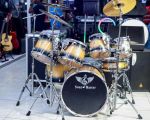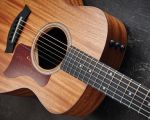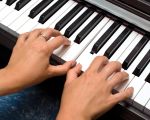
- Understanding Woodwind Instruments and Their Varieties
- Key Factors to Consider When Selecting a Woodwind Instrument
- Beginner-Friendly Woodwind Instruments: Pros and Cons
- Real-Life Examples and Learning Experiences
- Expert Advice on Buying and Where to Find the Best Instruments
1. Understanding Woodwind Instruments and Their Varieties
When considering choosing the best woodwind instrument for a beginner, it’s important first to understand what constitutes a woodwind instrument and the options available. Woodwinds include a family of instruments such as the flute, clarinet, saxophone, oboe, and bassoon. Each has unique characteristics in sound production, physical demands, and musical roles.
The flute, for instance, produces sound by directing air across a hole, unlike other woodwinds that use reeds. Clarinet and saxophone use single reeds, while oboe and bassoon use double reeds. These differences affect playability, tone, and maintenance requirements—critical points for beginners to keep in mind.
From a beginner’s perspective, not all woodwind instruments are equally accessible. The flute and clarinet are often recommended due to their relative ease of learning, availability of beginner models, and broad use across music genres.
1.1 The Role of Instrument Size and Shape
The physical size and shape of an instrument play a large role in comfort and usability. Smaller instruments like the flute and clarinet are easier for young players or those with smaller hands to handle. Conversely, larger instruments like the bassoon or saxophone can be cumbersome and require more breath control, which might be challenging for beginners.
1.2 Sound Characteristics and Musical Style
Understanding the tonal qualities of each woodwind helps beginners choose an instrument that matches their musical interests. The mellow sound of the clarinet fits well in classical and jazz settings, while the bright tone of the flute suits orchestral and contemporary music. This alignment between sound preference and style often motivates beginners to practice more enthusiastically.
2. Key Factors to Consider When Selecting a Woodwind Instrument
When choosing the best woodwind instrument for a beginner, several essential factors come into play. These considerations help ensure a positive learning experience and long-term satisfaction.
2.1 Physical Comfort and Ergonomics
Beginners should test how the instrument feels in their hands and mouth. Comfort affects practice length and prevents early frustration. For example, some beginners find the flute’s embouchure challenging initially, while others struggle with the finger stretch on a clarinet.
2.2 Budget and Instrument Quality
Quality should never be sacrificed for cost, but beginners often start with student-level instruments that balance price and playability. It’s wise to invest in reputable brands known for durable, well-made beginner models. These instruments often require less maintenance and produce better sound, which motivates practice.
2.3 Availability of Instruction and Support
Access to quality teaching and resources is crucial. Popular beginner instruments like the clarinet and flute typically have abundant learning materials, online tutorials, and teachers experienced with beginners, making the learning curve smoother.
3. Beginner-Friendly Woodwind Instruments: Pros and Cons
Below is an in-depth look at the most common beginner woodwind instruments, highlighting their strengths and challenges from a novice’s perspective.
3.1 Clarinet
The clarinet is often a top recommendation. Its single reed design is straightforward to learn, and the fingerings are logical and consistent. Clarinet players can enjoy versatile music styles from classical orchestras to jazz bands. However, reed maintenance requires some care, and beginners need to learn proper embouchure technique.
3.2 Flute
The flute appeals for its beautiful, airy tone and relatively lightweight design. It is also versatile across musical genres. Beginners sometimes find the initial sound production tricky due to the unique embouchure but gain proficiency quickly with practice. Its compact size makes it easy to transport.
3.3 Saxophone
The saxophone, although made of brass, is classified as a woodwind because it uses a single reed. It has a rich, expressive tone favored in jazz and pop music. It can be heavier and more expensive than other beginner instruments, which may pose challenges for younger players.
3.4 Oboe and Bassoon
These double reed instruments produce distinct, haunting tones and are staples in orchestras. However, they are generally not recommended for beginners due to complex reed preparation and demanding breath control requirements.
4. Real-Life Examples and Learning Experiences
Many beginner musicians have shared their journeys of choosing the best woodwind instrument. For example, Sarah, a 12-year-old student, started with the clarinet after trying the flute but found the fingerings more intuitive and the sound more appealing for her school band’s repertoire. Her positive experience highlights the importance of trying multiple instruments before deciding.
Another story comes from Jake, who initially struggled with flute embouchure but persisted with guidance from his teacher. His eventual success inspired classmates to explore woodwinds, showing how proper instruction and perseverance are key.
These examples underline the value of personalized choices and support during the early stages of learning.
5. Expert Advice on Buying and Where to Find the Best Instruments
Professionals emphasize the importance of purchasing from trusted dealers to avoid low-quality instruments that can discourage beginners. Stores specializing in woodwind instruments offer trial opportunities and expert advice, which are invaluable for making informed decisions.
For those exploring options, Beat Trigger provides a comprehensive selection of beginner woodwind instruments and personalized recommendations. Their experienced staff can guide buyers toward the best match based on the player’s age, skill level, and musical interests.
Additionally, renting an instrument is often recommended for absolute beginners to test interest without heavy upfront investment. Beat Trigger also supports rental programs tailored to newcomers.
In sum, choosing the right woodwind instrument is a blend of understanding personal preferences, physical compatibility, and practical considerations, backed by expert support and quality products.








